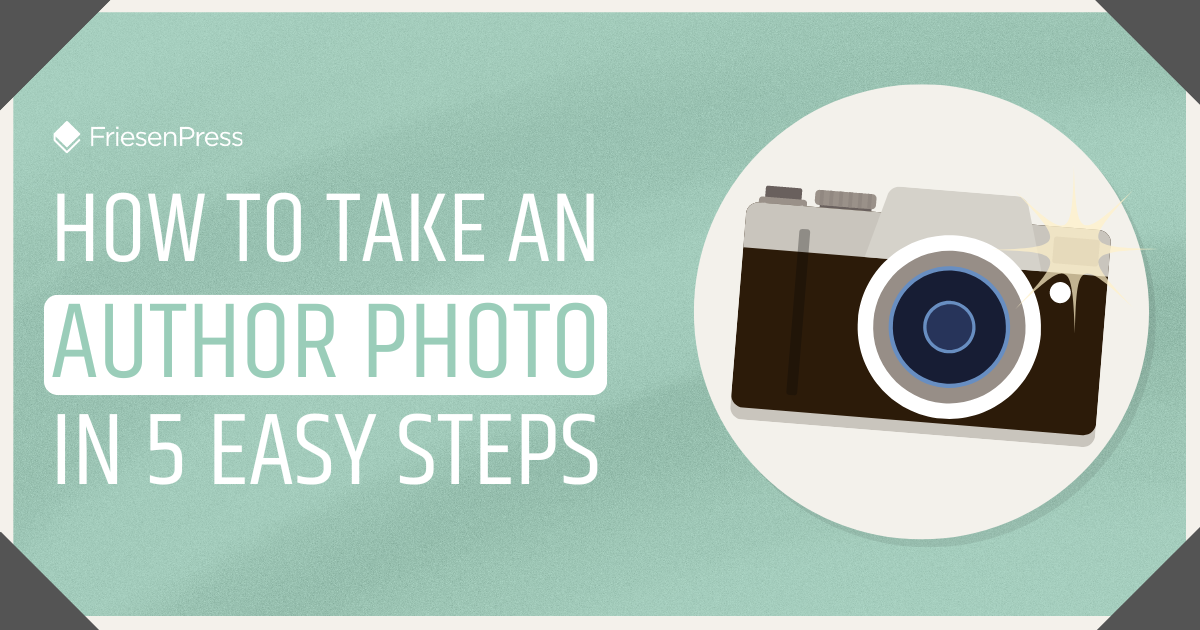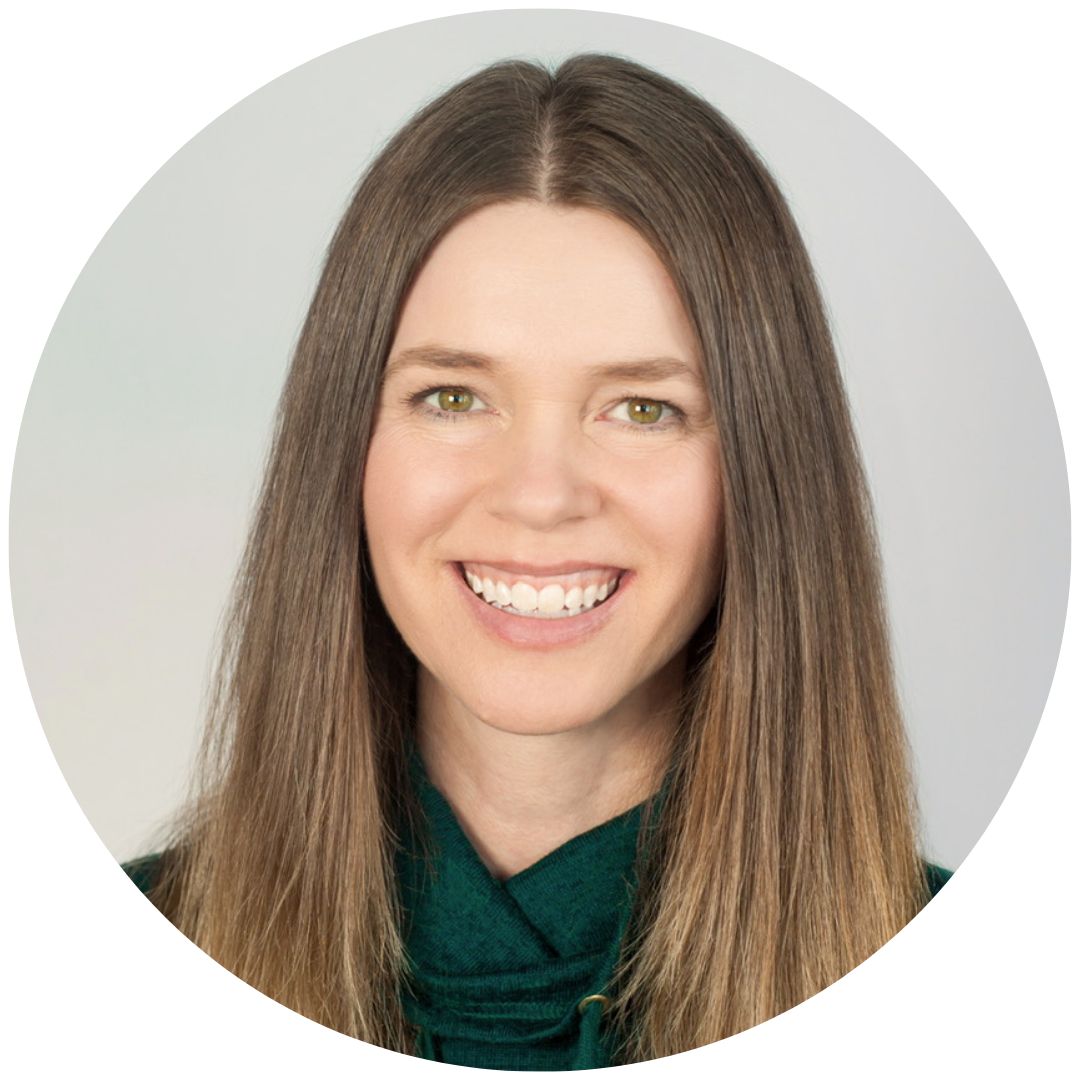How to Take a Professional Author Photo in 5 Easy Steps
/They say “a picture is worth a thousand words” — and that includes your author photo!
As a writer, you no doubt appreciate how much careful thought goes into the pages and chapters of your written story; a visual image like your book cover or author photo is no different. Readers often want to know the person behind the words, and that makes your About the Author section an opportunity to stand out — one that shouldn’t be overlooked.
Whether you’ve hired someone to take your author photo or are planning to take one yourself, I’m here to help you make the most of this branding opportunity! With over 20 years’ experience as a photographer, I’ve had the opportunity to photograph hundreds of branded headshots, and I’m happy to share a few of my most tried-and-true tips to help you make a great impression that perfectly complements your story.
Step 1: Getting Started
If you’re a plotter, research and planning was likely a huge part of your writing process. As with all things book marketing, planning is also a great place to start when generating practical and creative ideas for your author photo.
On the practical side, you’ll want to ensure you’re using the best camera you have access to if you’re going to take your photo yourself. While my top recommendation for a professional photo is a high-quality DSLR camera, sometimes we have to work with what we’ve got! Smartphones (especially newer models) have come a long way; while they don’t produce the same quality or versatility as professional cameras, their ease of accessibility makes them a solid option for capturing your image. And if you’re ever in doubt or overwhelmed, ask a creative family member or friend to help you with your shoot — they’ll likely be happy to help you out.
For creative ideas, a trip to your local bookstore or library can be very eye-opening. First, look into other authors who are writing stories in your genre and for your same target market. For example, an author photo for a children’s book (light, cheerful, colourful) will likely look much different than the author photo for a thriller (dark, serious, neutral tones).
It’s important to establish a strong brand identity beyond your book cover. As an author, you are an integral part of your story, shaping its narrative not just with your words but also with your unique personality, experiences, and style. By incorporating visual elements (more on this shortly) and maintaining consistency, you’ll have a better chance of creating a memorable identity that resonates with readers. You want to capture the right visual cues to align with your book topic and author brand.
Can you begin to imagine how different stylistic choices will impact your author image?
Over the next steps, I will continually circle back to step 1 since it has such an integral influence on every upcoming choice you’ll make.
Step 2: Find the Right Light
Photography is the art of light, so you can imagine how much influence lighting will have on your image. When photographing outside, generally the soft, warm lighting that occurs throughout golden hour is most pleasing. Golden hour occurs during the first couple of hours after sunrise, or the last couple of hours before sunset. During this time, the sun is at an angle that creates an even, golden glow. If, however, you’re looking for more contrast, midday sun will cast strong, sharp shadows, creating mystery. Cloudy days will give much more even lighting, resulting in a flattering, well-balanced portrait.
What impact do these different lighting styles have on your image? Let’s imagine: soft, even lighting allows the viewer a clear look at the artist, which creates a sense of familiarity; conversely, dark shadows can add a flare of mystery and depth.
When photographing indoors, being close to window light (indirect) will help maintain those even tones. Pro tip: if there is enough light in the room, I recommend turning off any surrounding indoor lights. This is especially true if they are the standard household incandescent bulbs, since they will cast a mixed colour hue onto your image.
Step 3: Dress to Express
Choose clothing that reflects your personal style, while keeping your genre in mind. For example, if your book is a romance novel, consider soft fabrics. Writing a children’s book? Consider bright colours or subtle patterns that are fun yet won’t distract from your smile.
I always recommend wearing what you are comfortable in. Being relaxed during your photoshoot will give your image the best chance of success. In terms of comfortable clothing, I am mostly speaking about fabrics and fit. Many of us tend to be most comfortable wearing solid black and, while not a wrong choice, this dark shade will have many impacts on the mood of your image. While black may be a great fit for a mystery book or sci-fi, consider adding a pop of colour, or soft neutral tones for a romance novel or children’s book. Adding layers and colourful accessories can be a great way to brighten up neutral tones while adding depth and interest to your image.
When choosing your wardrobe, always consider the colours that will be present in the background, too — whether a natural landscape or studio backdrop — and strive to complement those colours with your outfit choice. Speaking of your background…
Step 4: Set the Scene
What is your book about? The theme or topic of your book can be a fun way to set the stage for your author photo. If your book is about nature, consider a local park. If your book is a suspense novel, the texture of a city alleyway might be a great fit.
Another approach is selecting a plain, simple backdrop, which will effectively draw attention to your individuality and minimize distractions. If this is your preference, consider colour theory to help decide which background colour you’d like. Different colours evoke distinct emotions; for instance, warm colours (orange and yellow) create energy, while cooler hues (green and blue) evoke a sense of calmness. By understanding these responses, you’ll have a greater chance of creating a cohesive author brand identity. A clean, neutral coloured wall can provide a plain backdrop that allows the focus to remain on your personal expression.
As mentioned, one important consideration when choosing the location is complementing what you’re going to wear with the backdrop. If you are at a local park surrounded by green foliage, consider wearing either soft neutral tones or colours that would harmonize with the green, earthy tones rather than contrasting with them or blending in.
If you’re still unsure where to begin, consider using a neatly arranged bookshelf as a background. This can be a great addition to your scene, showcasing your journey as an author.
Writing multiple books? Here’s a fun tip: your author photo doesn’t need to be the same for each book, especially if you’re writing across multiple genres. You can have fun deciding the location to complement each unique book in your series.
Step 5: Express Yourself and Have Fun!
Your author photo is an opportunity to express who you are as an artist. Wanting to send friendly vibes? A nice smile goes a long way! Is your book serious in tone? An even expression or small smile may work well.
Our eyes are the window to our soul and even if you prefer not to smile, you can think pleasant, warm thoughts and your personality will shine through. One industry trick is to look away from the camera between shots. Then, just as the next photo is about to be taken, look at the camera as if greeting a familiar friend or picturing yourself in a treasured destination. This technique can give your image a much more natural and lively appearance.
Elevate your author photo by capturing your unique personality while maintaining a professional image. Consider posing with your favorite book to showcase your love for storytelling. Another option is to pose sitting at a desk, pen in hand, as if crafting your next story. Experiment with different angles to find your most flattering look; we all have a “better side,” and even slight adjustments can make a big difference. Try taking photos with your head turned slightly left and then right. Additionally, tilting your chin slightly up or down can also have a significant impact. For a varied selection, I recommend trying both sitting and standing poses, as our position affects not only our posture but also our facial expressions and angles.
To selfie or not to selfie for your author photo? While selfies can be convenient, I recommend using your camera at a distance, either with a tripod, by asking a friend, or by hiring a professional. Close-up shots can distort facial proportions and may lack the professional touch needed for an author photo.
Possibly the most important tip of all is to have fun through the process. Your energy and attitude will have a large impact on the final product. Remember: your author photo is an opportunity to showcase the writer behind the words. I hope these tips make your experience more enjoyable and produce an image you are happy with for years to come!
Lindsay Woollard is a FriesenPress Publishing Specialist, children’s book author, and illustrator with over twenty years’ experience in writing and visual communication. Lindsay has had a passion for storytelling since her earliest memories and her own journey in self-publishing began in 2021. As a Publishing Specialist, Lindsay is delighted to guide FriesenPress authors through the publishing process, helping to bring their unique stories to life.











